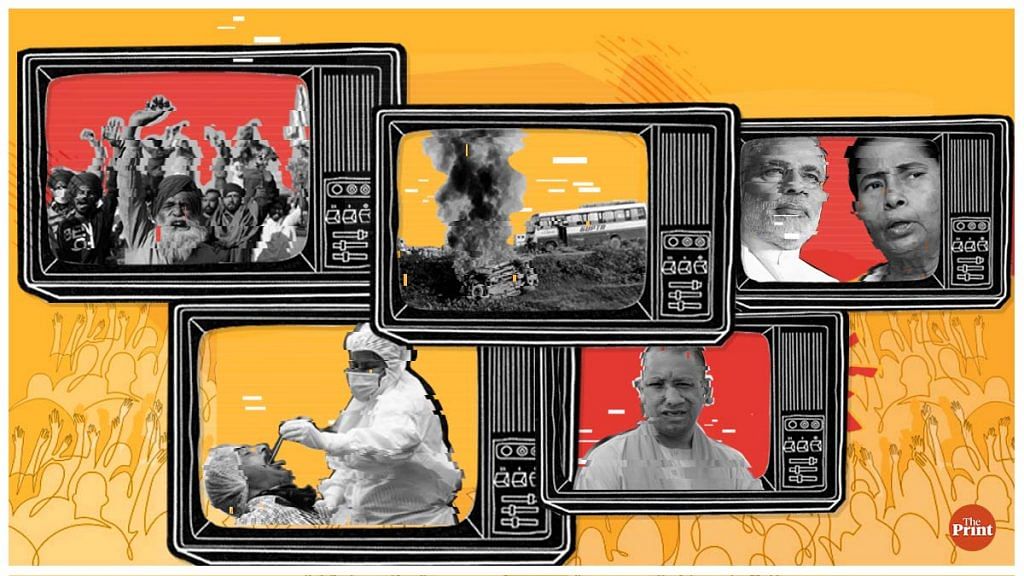To ask why a robust media industry can succumb to the proliferation of hate in such a manner is not a rhetorical question. Much of it is also tied intrinsically to problematic ownership and revenue models, licencing and inadequate funding. The value of television channels as propaganda tools cannot be overstated, and rich politicians have used personal wealth to further political messaging through ownership controls.
Worse, as both economic constraints and cheaper online options drive corporate sector advertising away from the more expensive, big mainstream media organizations, the latter have come to depend disproportionately on government advertising in the form of both public relations and ‘public service’ messages paid for by different arms of the Union and state governments.
It is no wonder, then, that big news organizations, eager to access the only real source of money in the markets today, appear to fall in line with the regime of the day, even if that means becoming a willing accomplice in the propagation of hatred in society. Prime Time anchors are instructed to avoid overly critical commentary, or at the very least, avoid naming the PM directly when being critical of the BJP’s communal agenda or policies ‘Hate trackers’, which gathered data on real crimes against minorities, were forced to shut down as they brought unwelcome global attention. News organizations have been willing to
participate in political propaganda for a price, and some, according to an investigative ‘sting’ operation by Cobrapost, even agreed to spread communal hate in return for cash from the ruling party.
Those who have resisted have been at the receiving end of tax raids, police complaints, charges of treason and government-backed lawsuits, either against the journalists themselves, or against their financial backers. In fact, in few democracies has a government so brazenly brought pressure to bear on private-sector advertisers or used its own financial instruments and cut off access in order to ensure the media only tells those stories that it wants told.
The tragic irony of today’s BJP government is that it has adopted all the tactics and media management toolkits of its earlier political opponents—the very systems that it claimed to fight against, in which bribery, intimidation and violence were the norm. Today several people who experienced the lash of the Emergency first-hand are among the PM’s cabinet colleagues.
Yet, they are only too willing to accuse any journalist not in agreement with their worldview of being biased and, worse, corrupt. The organized army of trolls often endorsed by the PM 35 and his cabinet colleagues have made abuse and invective the everyday currency of our political conversations.
The net result of these efforts is a wave of intimidation against smaller news organizations or independent journalists who try to swim against the tide, and a growing tendency to self-censor or seek ‘balance’ in the interest of preservation among bigger mass media
organizations.
Also read: From scientific fervour to social reform, a new book brings out little known facets of Hindutva
For example, media discourse in 2017, especially on news television and in social media, around a fresh exodus of Rohingya refugees from Myanmar, often skewed the narrative away from their plight as refugees fleeing a genocide to one that painted them as illegal immigrants seeking a better economic future or potential terrorists intending to threaten India’s national security.
In the interests of balance and objectivity, both arguments were given nearly equal space on TV and in print, even though the humanitarian imperative demanded much more urgent attention. In this case, too, vitiated social media discourse led by ‘influencers’ with hundreds of thousands of followers, divisive hashtags and viral comments found their way into the nightly news cycle.
The Indian mass media landscape today comprises over 300 TV channels (reaching 112 million households), 50,000 newspapers and magazines (with a readership of over 250 million), around 300 radio stations, 1,000 feature films in eighteen languages made each year, and a plethora of print, electronic, digital and telecommunications media. Twitter and Facebook have some of their largest consumer bases in India.
Across platforms, writers, journalists and citizen journalists opine and reflect prevailing moods, especially against minorities, rather than fact-check their rationale. That job has been left to a new genre of journalists, the fact-checkers, who call out members of their own fraternity for hate speech and disinformation. The pressure on the few remaining advertisers to stop the sponsorship of such programming in the media has mounted.
Over the last year, as scandals of rigged TV ratings come to light, some have made public statements36 against ‘toxic media channels’ that are creating a country which thrives on hate and withdrawn their advertising from such spaces.
While resuming office after winning again in 2019, Prime Minister Modi had repeatedly made clear his contempt for a media establishment he believes is biased—and worse, beholden to a corrupt elite. ‘Today the masks are off all journalists,’ he said, in an interview to—ironically—a journalist. ‘That is why your reputation is on the line.’
Modi’s many voluble supporters applauded his sentiments then, without acknowledging that the very critiques they consistently make of past dispensations apply to them today. Riding a wave of ‘antiestablishment’ sentiment since he first arrived in the PMO, Narendra Modi has succeeded in creating the most pliant, cowering media any leader since Indira Gandhi has enjoyed.
